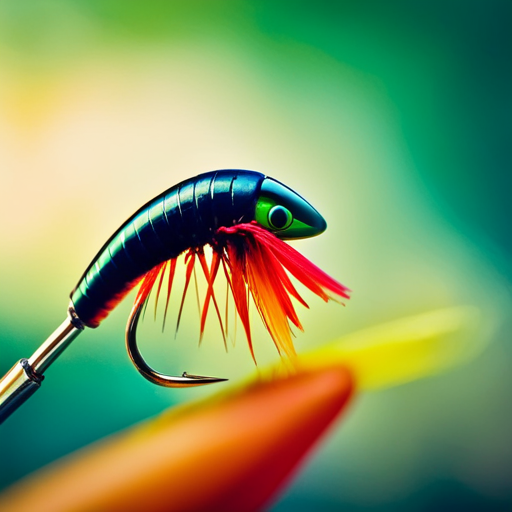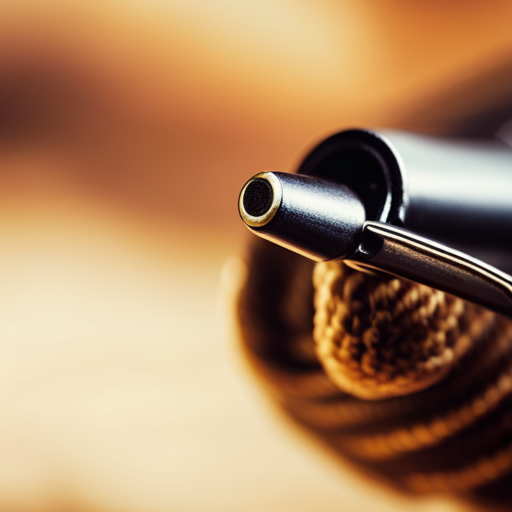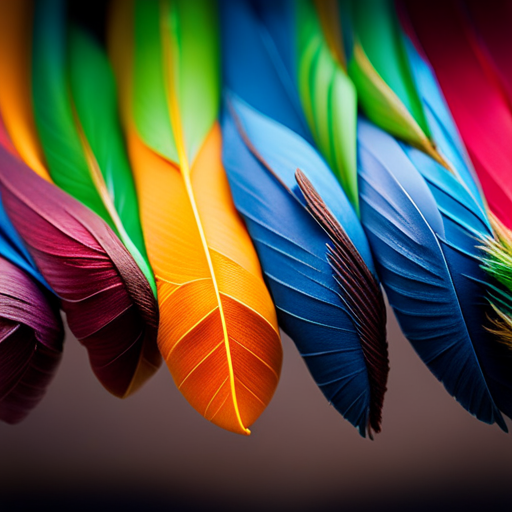Diving into the intricate web of synthetic fly tying fibers, this article unravels the evolution, properties, and utilization of these versatile materials.
From their distinct characteristics to the advantages they offer in fly tying, explore the vibrant world of color and texture options.
Gain valuable tips for working with synthetic fibers, as this comprehensive guide equips fly tying enthusiasts with essential insights and techniques for creating dynamic and effective fly patterns.
The Evolution of Synthetic Fly Tying Fibers
The evolution of synthetic fly tying fibers has been driven by advancements in material science and a growing demand for durable and lifelike imitations. With the aid of technology, evolutionary advancements in synthetic materials have revolutionized the art of fly tying. Innovative applications of materials such as polypropylene, polyester, and nylon have allowed fly tyers to create flies that not only accurately mimic natural prey but also possess remarkable durability.
These evolutionary advancements have enabled the creation of synthetic fibers that exhibit lifelike movement in the water, enhancing their appeal to fish. The innovative applications of these materials have expanded the possibilities for fly patterns, allowing for the development of intricate designs that were previously unattainable with traditional natural materials.
Additionally, the durability of synthetic fibers has significantly extended the lifespan of flies, reducing the need for frequent replacement due to wear and tear.
As material science continues to progress, it is likely that we will witness further innovations in synthetic fly tying fibers, leading to even more realistic imitations and enhanced performance in the art of fly fishing.
Properties and Characteristics of Synthetic Fibers
The properties and characteristics of synthetic fibers play a crucial role in their suitability for fly tying. Durability and flexibility are key factors that influence the performance of these fibers in creating lifelike and resilient fly patterns.
Additionally, the wide variety of color options available in synthetic fibers allows fly tiers to meticulously match natural prey, enhancing the effectiveness of their imitations.
Durability and Flexibility in Fibers
Synthetic fly tying fibers exhibit a remarkable combination of durability and flexibility, making them highly desirable for fly tying applications in the world of angling. These fibers undergo rigorous durability testing to ensure their ability to withstand the challenges encountered during fishing. Additionally, their flexibility allows for intricate fiber manipulation, enabling anglers to create lifelike imitations of natural prey. The table below provides a comparison of the durability and flexibility of common synthetic fly tying fibers, showcasing their distinct properties and characteristics.
| Fiber Type | Durability Rating | Flexibility Rating |
|---|---|---|
| Nylon | High | Moderate |
| Polypropylene | Very High | High |
| Polyester | Moderate | High |
| Acrylic | Moderate | Moderate |
Understanding the specific attributes of these fibers can assist anglers in selecting the most suitable materials for their fly tying endeavors.
Variety of Color Options
Discussing the variety of color options for synthetic fly tying fibers provides valuable insight into their properties and characteristics. When exploring custom color matching options, fly tyers can create vibrant, multi-toned effects that add depth and realism to their fly patterns.
Synthetic fibers offer an extensive range of colors, from natural hues to bright, fluorescent tones, allowing for precise color matching to imitate specific insects or baitfish. These fibers are also known for their colorfastness, maintaining their vibrancy even after repeated use.
Additionally, synthetic fibers often have a translucent quality, further enhancing the multi-toned effects when layered or blended. Fly tyers can effectively replicate the intricate color variations found in natural materials, making synthetic fibers a versatile and visually appealing choice for fly tying.
Utilizing Synthetic Fibers in Fly Patterns
Let’s explore the versatility of synthetic fibers in fly tying and the benefits they offer to fly patterns.
By understanding the impact of these fibers on fly design, we can better appreciate their role in creating effective and innovative patterns.
Utilizing synthetic fibers opens up a world of possibilities for fly tiers, allowing for the creation of durable, lifelike imitations that can attract a wide range of fish species.
Versatility in Fly Tying
Utilizing synthetic fibers in fly patterns offers fly tyers a wide range of versatile options for creating lifelike imitations of natural insect prey. The versatility of synthetic fibers allows for innovative applications in fly tying, enabling fly tyers to experiment with new techniques and material advancements.
These fibers can be easily manipulated to imitate the intricate and delicate movements of insects, making them highly effective in creating realistic fly patterns. Moreover, synthetic fibers come in a variety of colors, textures, and densities, providing fly tyers with the flexibility to tailor their patterns to specific fishing conditions and target species.
The adaptability of synthetic fibers allows for the creation of durable and lifelike flies that are highly effective in enticing fish. This versatility makes synthetic fibers an invaluable asset in the art of fly tying.
Transitioning into the subsequent section, it is important to explore the numerous benefits of synthetic fibers in fly tying.
Benefits of Synthetic Fibers
Synthetic fibers offer fly tyers a myriad of benefits, including enhanced durability, lifelike imitations, and adaptability to varied fishing conditions, further solidifying their indispensable role in the art of fly tying.
When utilizing synthetic fibers in fly patterns, fly tyers can benefit from:
-
Blending techniques
Synthetic fibers allow for easy blending with different colors and materials, enabling fly tyers to create custom blends for unique and effective fly patterns. -
Creative applications
The versatility of synthetic fibers opens up endless possibilities for creative fly patterns, allowing tyers to experiment with new designs and innovative techniques. -
Consistency in tying
Synthetic fibers offer consistent quality and performance, ensuring that fly patterns maintain their lifelike appearance and durability over numerous fishing sessions.
Impact on Fly Design
The impact of synthetic fibers on fly design is significant. They offer fly tyers increased creative freedom and the ability to achieve consistent, lifelike patterns that are well-suited to various fishing conditions. Synthetic fibers have revolutionized fly tying techniques, allowing for the creation of flies that closely mimic natural prey. This positively impacts fly presentation.
The introduction of these fibers has led to the development of innovative fly patterns that were previously unattainable with traditional materials. Fly designers now have the flexibility to experiment with a wide range of colors, textures, and densities. This results in flies that are highly effective in imitating different aquatic insects and baitfish.
This enhanced level of creativity has not only expanded the possibilities for fly design but also significantly improved the overall effectiveness of flies in enticing fish.
Advantages of Using Synthetic Fibers in Fly Tying
What are the key benefits of incorporating synthetic fibers in the art of fly tying?
Synthetic fibers offer a range of advantages that enhance fly patterns and revolutionize the world of fly tying. Some of the key advantages of using synthetic fibers in fly tying include:
-
Enhancing Fly Patterns:
-
Synthetic fibers allow for a wide range of colors, textures, and translucency, enabling fly tyers to create more realistic imitations of natural prey. This enhances the overall attractiveness and effectiveness of the fly patterns.
-
Synthetic Fiber Advantages:
-
Synthetic fibers often possess unique properties such as water repellency, buoyancy, and durability, making them highly suitable for specific fly patterns and fishing conditions. These advantages can greatly improve the performance and lifespan of the flies.
-
Innovative Fly Materials and Techniques:
-
The use of synthetic fibers opens up opportunities for innovative fly tying materials and techniques. This allows fly tyers to experiment with new materials and methods, leading to the development of cutting-edge fly patterns and designs that were previously unattainable with traditional natural materials.
Exploring Color and Texture Options in Synthetic Fibers
Exploring a diverse range of color and texture options in synthetic fibers enables fly tyers to further enhance the visual appeal and lifelike qualities of their fly patterns, contributing to the overall effectiveness of the flies in imitating natural prey. Color blending is a crucial aspect of creating realistic imitations of natural prey.
Synthetic fibers offer an extensive range of vibrant and natural-looking colors, allowing fly tyers to blend and mix colors to achieve the perfect match for the intended prey. This capability to blend colors provides fly tyers with the flexibility to replicate the intricate color variations found in insects, baitfish, and other aquatic organisms.
Additionally, synthetic fibers offer various textures, from fine and supple to coarse and wiry, enabling fly tyers to create flies with textural contrast. By incorporating different textures, fly tyers can add depth and dimension to their patterns, making them more visually appealing and lifelike.
The ability to manipulate both color and texture in synthetic fibers empowers fly tyers to craft flies that closely resemble natural prey, ultimately increasing their effectiveness in attracting fish.
Tips for Working With Synthetic Fly Tying Fibers
To achieve optimal results when working with synthetic fly tying fibers, it is important to select high-quality materials that match the desired characteristics for the intended fly pattern.
- Best Materials Selection:
- Choose materials with the right texture and density to achieve the desired buoyancy and movement in the water.
- Look for fibers that possess vibrant and long-lasting colors, ensuring the fly remains attractive to the fish.
- Opt for synthetic fibers that are durable and resistant to fraying, allowing the fly to withstand multiple strikes without compromising its appearance or performance.
By meticulously selecting the best-suited synthetic fly tying fibers, fly tyers can enhance the visual appeal and functionality of their creations.
When working with these materials, it is essential to apply various techniques such as blending different fibers, layering materials, and using specific tying methods to achieve the desired fly pattern.
Incorporating these tips and techniques will enable fly tyers to create flies that not only mimic natural bait effectively but also exhibit longevity and resilience in the water, ultimately increasing their success in fly fishing endeavors.
Frequently Asked Questions
What Are the Environmental Impacts of Using Synthetic Fibers in Fly Tying Compared to Natural Materials?
Using synthetic fibers in fly tying can have environmental impacts due to microplastic pollution. Sustainability practices and proper waste management are crucial to mitigate these effects. Natural materials may offer more environmentally friendly alternatives.
Are There Any Specific Health Concerns Associated With Working With Synthetic Fly Tying Fibers?
Health risks associated with synthetic fly tying fibers include material toxicity and potential respiratory issues. Safety precautions such as using protective gear and proper fiber handling techniques are crucial to minimize exposure and ensure a safe tying process.
Can Synthetic Fibers Be Used to Create Realistic-Looking Insect Imitations for Fly Fishing?
Yes, synthetic fibers can be utilized to craft remarkably realistic insect imitations for fly fishing. When skillfully used, these materials closely mimic the appearance and movement of natural insects, enhancing fishing techniques.
How Do Different Synthetic Fibers Compare in Terms of Durability and Longevity in Fly Patterns?
When evaluating synthetic fibers for fly tying, durability comparison and longevity evaluation are crucial. Different fibers vary in their ability to withstand the rigors of fishing and maintain their quality over time, impacting the effectiveness of fly patterns.
What Innovations or Advancements Are on the Horizon for Synthetic Fly Tying Fibers?
Innovations in synthetic fly tying fibers are evolving rapidly. Advanced manufacturing processes are enhancing fiber properties, offering increased durability and lifelike movement. These innovations are reshaping the fly tying landscape, catering to the evolving needs of fly anglers.
Conclusion
In conclusion, the world of synthetic fly tying fibers has evolved significantly, offering a wide range of properties, characteristics, and color options for fly patterns.
The advantages of using synthetic fibers in fly tying are numerous, and with the right techniques, fly tiers can create lifelike imitations of natural prey.
Like a painter with a vast palette of colors, fly tiers can use synthetic fibers to create intricate and realistic fly patterns that will entice even the most selective fish.




